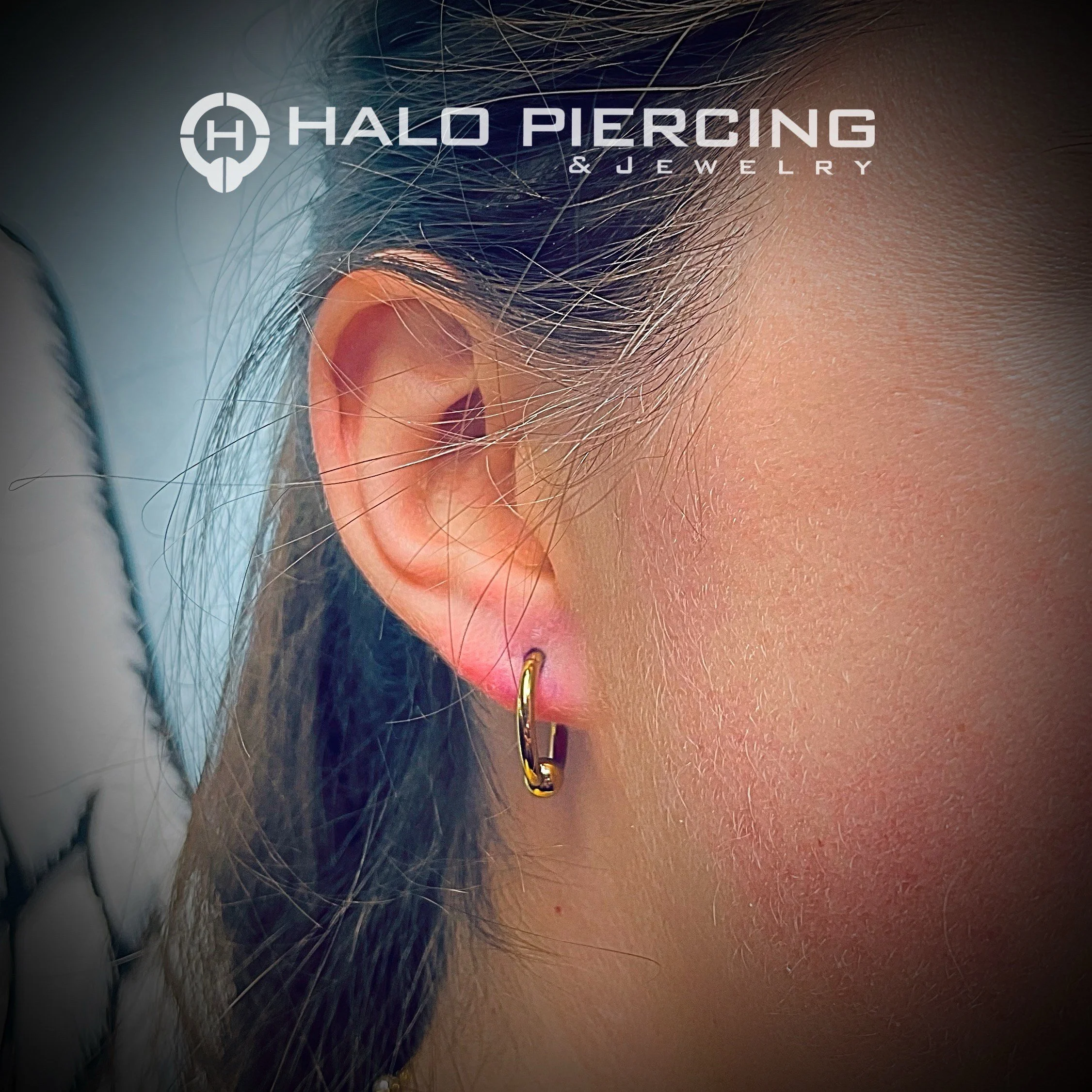We've used rings for piercings for over 30 years and found they work fine for most piercings*, though healing may take longer. This is great if you're on a budget. You can switch to barbells or gold later, giving you time to save for a piece you love.
Don’t like rings? Get pierced with plain!
*Rings are not an option for all piercings. We only use barbells for the following: Nipple, conch (sadhu), some male and female genitals, Monroe, forward helix, tragus, and tongue.
Titanium captive bead ring anodized to look like yellow gold.
Once you are all healed you can also upgrade just the beads to Opals or gem sets too!
Healed Conch with a captive bead ring and a fresh Daith with a ring.
Please not that rings do not do well in fresh conch (Sadhu) piercings, wait at least a ear for a ring.










